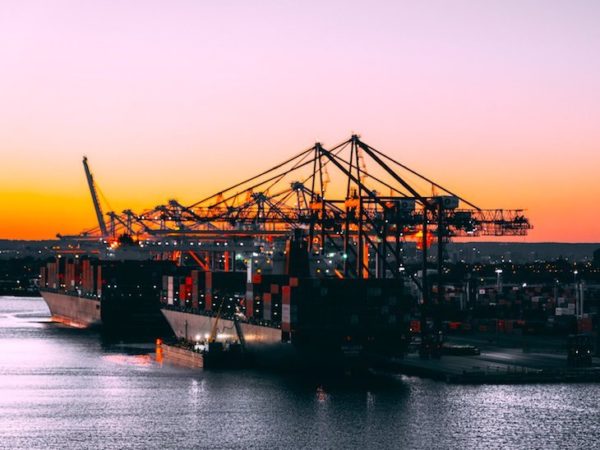
The size of shipping vessels have steadily increased since containerisation was first introduced in the 1950s. As technology has advanced in the last decade, we have seen the development of ULCVs (ULtra Large Container Vessels) as shipping lines compete to build ‘megaships’ to accommodate more cargo. We review the advantages and disadvantages that these super large vessels have brought to the Shipping Industry.
What are Megaships?
ULCVs are defined as vessels with a length of up to 400m, a width of up to 59m, and a capacity of over 18,500 TEU (twenty foot equivalent units). The increase in capacity over the last decade resulting from the manufacture of these megaships, is the equivalent of doubling the maximum container ship size.
ULCVs are mainly deployed on the Far East – North Europe shipping route, not just because this is the lane that has sufficient cargo, but also because this route covers the longest nautical distance and has ports with infrastructure that can handle their size.
Why were Megaships developed?
The development of larger vessels was driven by the shipping lines’ necessity to drive down their operational costs to achieve price competitiveness. Megaships came about on the back of the need by carriers to achieve maximum economies of scale and achieve cost savings to offset depressed freight markets.
Larger vessels contribute to profitability as they reduce the cost per container moved. It has been reported that the total vessel cost per transported container has been reduced by roughly a third as a result of transportation via ULCVs.
The current wave of megaships in the last couple of years is also due to the top shipping lines playing ‘catch up’ with each other. No carrier wants to be left behind in the race to reap the benefits of the purported economies of scale through the deployment of megaships.
Impact on the Industry
While the development of ULCVs has provided some cost benefits for the carriers, these benefits may be challenging to sustain. The issue is now one of utilisation – megaships need to have a high percentage utilisation to achieve cost savings. It can be very difficult to achieve the levels of utilisation required as there is now more space available on these ships than there is the amount of cargo out there. This results in pressure to fill up these ships for maximum utilisation of slots. However what we have seen in the last year is the carriers becoming much better at managing capacity to meet demand.
The growth of megaships has been seen as one of the main drivers of growth in the shipping industry and also the major driver for global alliances. The only way to fill ever-larger container ships, and obtain the potential economies of scale that they offer, is for carriers to pool their volumes on particular trade routes and share ships. This has been seen with the ongoing consolidation with the industry. (Click here to see our infographic showing the progression of the shipping alliances over the last 20 years.)
Impact on infrastructure
Right now, the larger vessels dominate the Asia – Europe route given that these lanes have ports that are better equipped to handle them.
The number of ports unequipped to handle these mega ships significantly outnumbers those that currently can, which limits the number of ports carriers can call at.
Large capital investment is required to make the changes to ports required – such as creating wider and deeper channels for ships coming into ports and extending turning lanes to make them long enough to turn ships around. As well as providing larger container storage areas and more and bigger ship-to-shore cranes. This has had the added impact of putting pressure on haulage resource – for example 5,000 containers discharged over 1.5 days versus 5,000 containers discharged over 1 week historically.
Conclusion
The rise of container megaships has been driven by the need for economies of scale for shipping lines. However the supply chain challenges and infrastructure investments that are needed to support these enormous vessels have interdependencies, all of which come at a cost.





